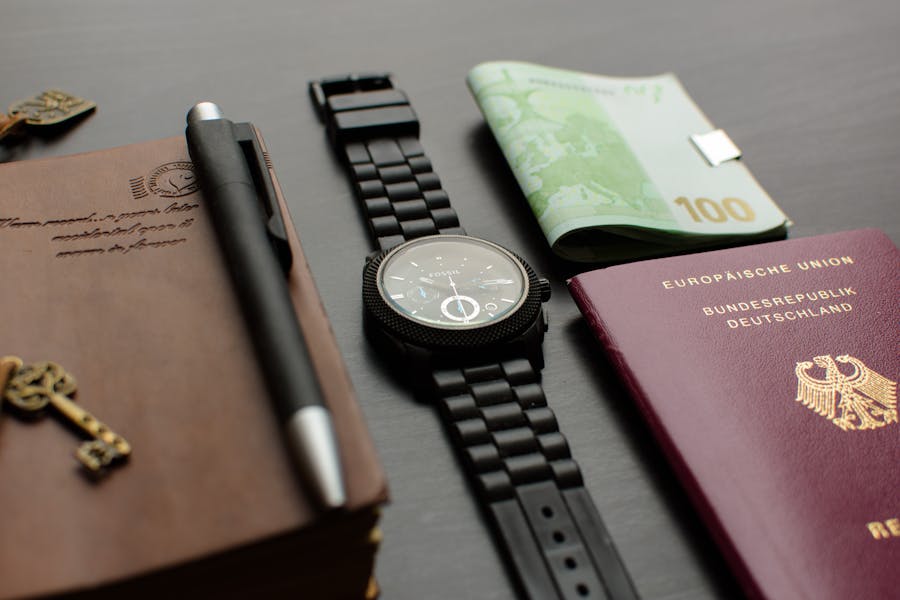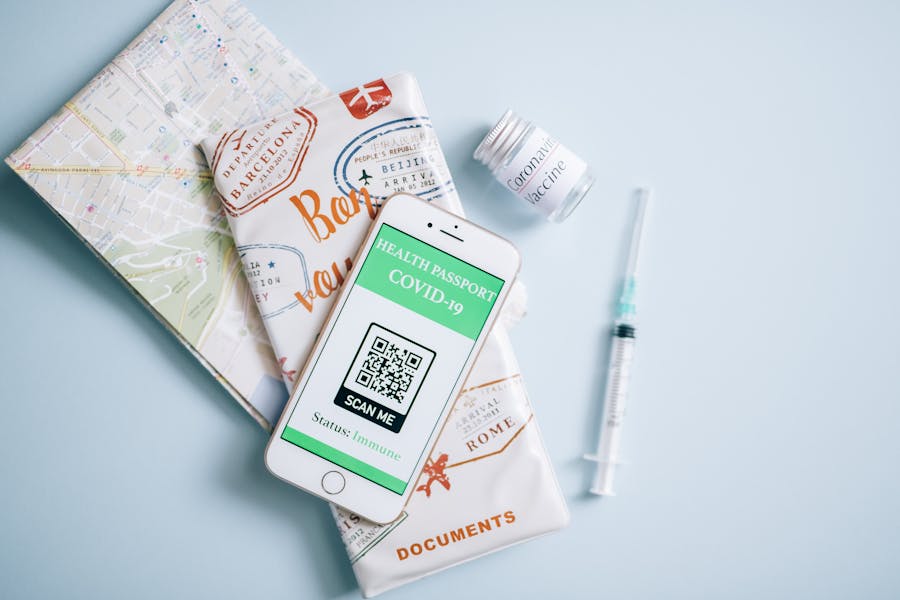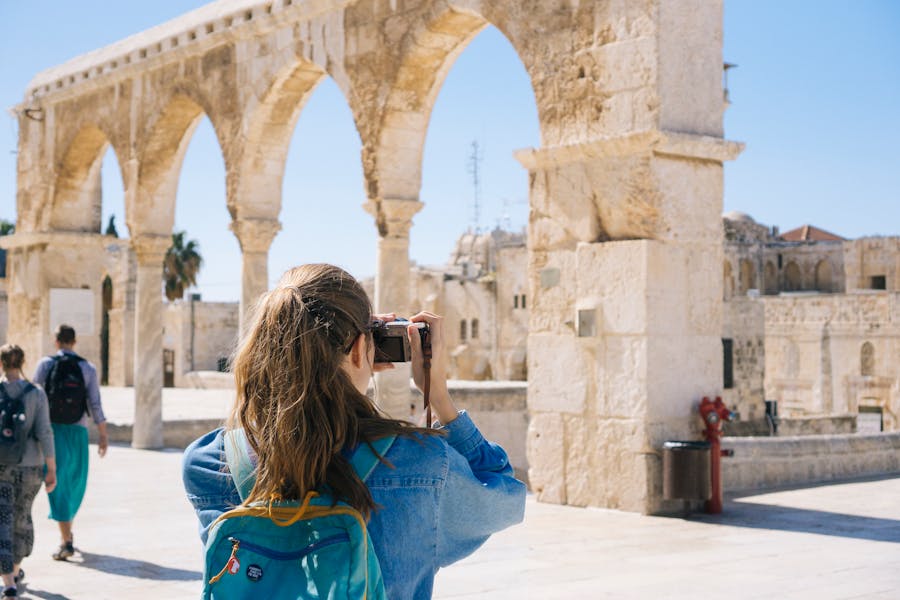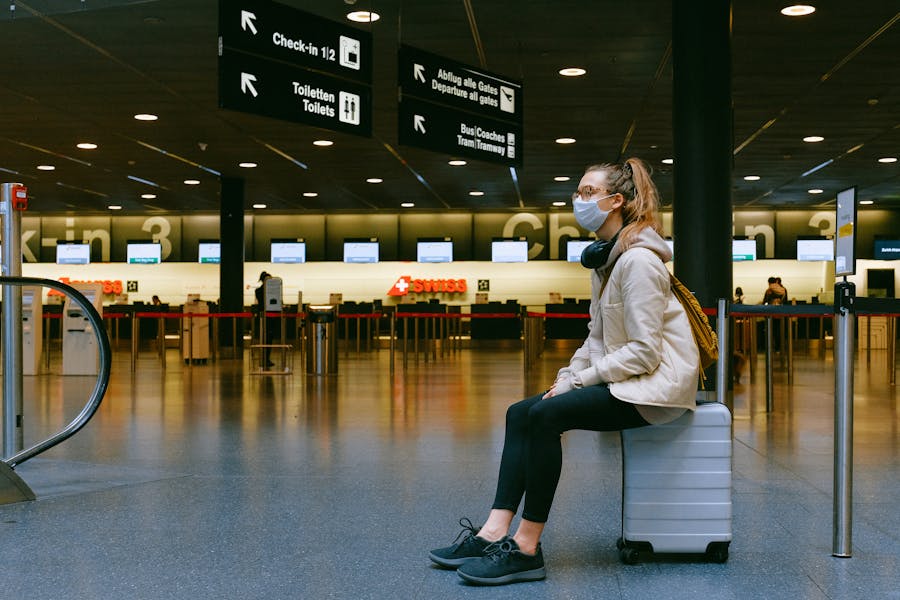Planning an international trip? Yeah, it can feel overwhelming at first, but honestly, it doesn’t have to be. With a little effort upfront, you’ll dodge most of the common travel headaches and get to focus on the fun stuff. Getting ready for international travel means checking entry requirements, handling your paperwork, and making some safety arrangements before you ever leave home.
Stress-free travel actually kicks off weeks before you ever set foot on a plane. Take a look at your passport—does it expire within six months of your return? Many countries won’t let you in if it does. Check out visa requirements, local customs, and any travel advisories for your destination. I always make copies of my important documents (passport, driver’s license, travel insurance info) and stash digital versions in my email, plus physical copies somewhere separate from the originals.
Don’t skip the little things that make travel smoother. Tell your bank you’re leaving the country so they don’t block your cards. Get any vaccines you need, and maybe sign up for the U.S. State Department’s Smart Traveler Enrollment Program (STEP) for a little extra peace of mind.
Key Takeaways
- Check your passport’s expiration, understand visa rules, and make both digital and paper copies of your critical travel documents.
- Alert your bank about your travel, look into local currency and customs, and figure out how you’ll get around once you arrive.
- Protect yourself by getting vaccinations, buying travel insurance, and registering for any travel advisory programs that make sense.
Understanding Entry and Travel Requirements

Every country plays by its own rules. You need to know what those are before you go, or you might run into some seriously annoying problems at the border.
Researching Visa Requirements
Before you book anything, find out if you need a visa. Some countries let you in without one (for a limited time—usually 30-90 days), while others want paperwork from everyone, no matter how short the stay.
The U.S. State Department website is a solid starting point for figuring this out.
Visa applications can be wildly different. Sometimes it’s a quick online form, but other times you’ll need an in-person interview, a stack of documents, and weeks of waiting.
Don’t put this off! Some visa applications take months. Apply early so you don’t get hit with rush fees or, worse, miss your trip.
Checking Passport Validity
Your passport has to be valid for your entire trip, but lots of countries want it valid for 3-6 months after you plan to come home. That’s the “six-month rule.” Ignore it and you might not even get on your flight.
Go check your passport’s expiration date now. If it’s within a year, just renew it before you go.
Look at your blank pages, too. Some countries want 2-4 empty pages for stamps. If you’re running out, get a new passport.
Renewal can take 6-8 weeks, sometimes longer during busy seasons. If you’re in a hurry, you can pay extra for expedited service.
Meeting Immigration and Customs Rules
Immigration officers have the final say on whether you get in. Be ready to show:
- Proof of onward or return travel
- Evidence you have enough money for your stay
- Where you’re staying
- Travel insurance (some countries require it)
Countries also have strict rules about what you can bring. Watch out for:
- Food and plants
- Medications (even if prescribed)
- Large sums of cash
- Cultural items
Always fill out those customs forms honestly. Lying can lead to fines, losing your stuff, or even arrest.
I’ve learned to screenshot entry requirements on my phone. It’s saved me more than once when airline staff doubted my paperwork.
Organizing Essential Travel Documents

Keeping your travel documents organized makes international trips way less stressful. When your papers are in order, you breeze through checkpoints and enjoy peace of mind.
Preparing Required Visas and Permits
Start researching visa requirements at least 3-4 months before you go. Some applications need weeks or even months to process. Make yourself a checklist:
- Passport (valid for at least 6 months past your trip)
- Visa applications and all supporting docs
- Proof of where you’ll stay and your return ticket
- Vaccination records (if needed)
- Travel insurance info
Don’t procrastinate! Visa processing times can be all over the place. I once missed a trip to India because I didn’t start early enough.
If you’re staying longer or going for work or study, you might need extra permits. Double-check the embassy website for the latest info.
Storing Important Documents Securely
Use a system that keeps your documents safe and handy. I like a dedicated travel pouch with RFID protection for daily use.
Scan or snap photos of everything before you leave:
- Passport (info page and visas)
- Driver’s license (front and back)
- Travel insurance details
- Emergency contacts
- Hotel confirmations
Store these digital copies in a few places: your phone, cloud storage, and email. Send a set to someone you trust, just in case.
Paper copies matter, too. Keep them separate from the originals. I usually hide mine in a different part of my bag.
Planning Your International Trip

Planning an international trip takes some real thought. The right prep lets you actually enjoy your time abroad without sweating the small stuff.
Creating a Travel Itinerary
First, decide how long you’ll be gone. A week? Two? More? Your timeframe shapes everything else.
Once you have your dates, look up the big attractions and figure out how much travel time you’ll need between places.
Don’t try to do too much. Packing your schedule leads to exhaustion and, honestly, less fun. I’ve learned to stick to 1-2 main things a day, with plenty of room for surprises.
Make a simple day-by-day outline:
- Morning plans
- Afternoon ideas
- Evening options
- Travel/commute time
- Free time for whatever pops up
Check the weather for your dates, too. It can totally change your plans.
Booking Flights and Accommodations
Start flight hunting about 3-4 months out for the best prices. If you can be flexible, you might save a ton. I like comparing options on KAYAK for a good balance of price and convenience.
When it comes to where you’ll stay, think about what matters to you—location, price, or maybe something unique? Vacation rentals can give you more space and a local feel, especially if you’re staying a while.
Notify your bank about your travel dates! Having your card frozen abroad is a nightmare—I spent hours on the phone with my bank in Thailand once because I forgot.
If you’re landing late, booking airport transfers ahead of time is a real stress-saver.
Consulting Guidebooks and Travel Resources
Online resources are great, but I still love a good guidebook. They’re usually well-researched and less likely to be out-of-date than random websites.
Go for editions published in the last couple years. Lonely Planet, Rick Steves, and Fodor’s are all solid.
Travel bloggers who’ve just been to your destination can offer tips that guidebooks miss. Their honest reviews sometimes reveal hidden gems.
Join forums or Facebook groups for your destination. Other travelers are a goldmine for advice on local transport, safety, and what’s actually open these days.
Managing Finances for International Travel

Managing your money is a huge part of traveling internationally. Planning ahead for currency and knowing how to access your funds will save you hassle and extra charges.
Understanding Exchange Rates
Exchange rates tell you how much your money is worth abroad. Before you go, check rates using XE Currency or Oanda. Knowing the value helps you avoid overpaying.
Try to get a feel for the conversion in your head. If 1 USD is 0.85 EUR, then 20 euros is about $24. Being able to estimate quickly helps you stick to your budget.
Rates change all the time. Airports and touristy spots usually have the worst rates, even if they claim “no fees.”
Money-saving tip: Watch the rates for a few weeks before your trip. If you spot a good deal, exchange some money early.
Accessing Money Abroad
Bring a mix of payment options. Having two or three ways to get cash is smart in case something goes wrong.
Before you go:
- Tell your bank where and when you’ll be traveling
- Set up online/mobile banking
- Make copies of your cards (front and back)
- See if your bank has ATM partners abroad
ATMs usually give the best rates, but check for fees. Some banks charge per withdrawal or a percentage. Fewer, bigger withdrawals can save you money.
Credit cards are great for big purchases or emergencies. Look for cards with no foreign transaction fees—some even throw in perks like insurance or lounge access.
Have some local cash for your first day—enough for a taxi, some food, and little things until you find an ATM.
Arranging for Safety and Travel Insurance

Safety and insurance can make or break your trip. Handle these before you leave to avoid headaches and keep your mind at ease.
Purchasing Travel Insurance
Most health insurance policies don’t work abroad. That’s why travel insurance is so important—it covers medical emergencies, trip cancellations, lost bags, and more.
Look for a policy that covers:
- Emergency medical care
- Medical evacuation
- Trip cancellation or interruption
- Lost or delayed luggage
- 24/7 assistance
Expect to pay 4-10% of your trip cost. It might seem like a lot, but I once had a $3,000 hospital bill in Thailand that my $200 policy covered completely.
Go for at least $50,000 in medical coverage and $250,000 for evacuation if you’re traveling internationally.
Planning for Emergencies
Even with insurance, you need a backup plan. Always share your travel plans with someone at home. It’s the golden rule of travel safety.
Make a digital folder with:
- Passport copies
- Insurance details
- Emergency contacts
- Embassy info
- Local emergency numbers
Register with your country’s advisory program—Americans have STEP.
Look up your destination’s risks. Is healthcare available? Any political unrest? Crime issues? Knowing this stuff helps you prep.
Save emergency contacts in your phone and write them down, too. Tech fails when you least expect it.
Getting Ready for Departure

The last few days before you leave can get hectic. If you prep for airport procedures ahead of time, you’ll save yourself a lot of stress.
Understanding Airport Check-In Procedures
Most airlines let you check in online 24-48 hours before departure. Use it! You can pick seats and print or download your boarding pass.
If you checked in online but have bags, look for bag-drop counters—they’re usually quicker.
For international flights, get to the airport at least three hours early. Some places get insanely busy, especially during holidays.
Keep your passport, boarding pass, and any visas handy. Most places accept mobile boarding passes now, but having a paper backup never hurts.
If you’re carrying special items like sports gear or fragile stuff, check your airline’s rules. Some things require special handling.
Preparing for Security Screening
Security lines can eat up a lot of time. Make it easier by dressing simply—skip big jewelry, belts with metal buckles, and tricky shoes.
Remember: liquids must be in containers of 3.4 ounces (100ml) or less, all in one quart-sized clear bag.
Have your electronics ready to pull out—laptops and tablets usually go in separate bins.
Stay connected with an international travel eSIM so you can avoid crazy roaming charges and always access your travel info.
Empty your pockets before you go through the scanner. I just drop everything into my carry-on until I’m done.
Sometimes you’ll get picked for extra screening. It happens—just stay calm and it’ll go faster.
Preparing for Arrival at Your Destination

Landing in a new country can be both thrilling and a little nerve-wracking. If you know what to expect at immigration and customs, you’ll get through faster and start your adventure on the right foot.
Navigating Immigration Upon Arrival
When your plane finally touches down, immigration is usually the first thing you’ll deal with. Grab your passport and any necessary visa documents before you even get to the counter.
You might spot electronic kiosks—these can really speed things up, so definitely keep an eye out.
You’ll probably need to fill out an arrival card with some basic info about your visit. Sometimes, airlines hand these out on the flight, but you could also find them before reaching immigration.
If you can, fill out the card while waiting in line. It’s an easy way to save a little time.
Immigration officers often ask about your travel plans, like:
- Where you’ll be staying
- How long you plan to stay
- Why you’re visiting
- Details about your return flight
Just answer honestly and keep it simple. Having your hotel address and contact info ready can make things go a lot smoother.
Complying with Customs Regulations
After immigration, head over to baggage claim and grab your luggage. Customs comes next, where officials check that you’re not bringing in anything prohibited.
Look up your destination’s rules before you pack. Typical no-gos include:
- Fresh fruits and veggies
- Meat products
- Plants or seeds
- Too much alcohol or tobacco
Some places want you to declare all food, medications, or large amounts of cash. If you’re unsure, just declare it. Penalties for not declaring can get pretty steep.
Many airports use a green and red channel system. Go green if you have nothing to declare, red if you do. Be honest—random inspections happen, even in the green lane, and it’s really not worth the risk.
Frequently Asked Questions
International travel can spark a lot of questions, especially if you’re new to it. Figuring out what documents to bring, how to stay safe, and what to pack can make things a lot easier.
What essential documents should I pack for an overseas trip?
Bring your passport, and make sure it’s valid for at least six more months. Some countries are strict about this.
Depending on where you’re going, you might need a visa. Check early; some take weeks to process.
Print copies of your flight details, hotel bookings, and travel insurance. If your phone dies or you lose access, paper copies can really save the day.
If you plan to rent a car, bring your driver’s license. Some places require an International Driving Permit, so double-check that too
How can I best prepare myself for the cultural and environmental differences in a new country?
Look up local customs, greetings, and what’s considered rude before you go. Even learning a couple of words in the local language can help a ton.
Check the weather and pack for it. Going from a cold climate to a tropical one—or the other way around—can be a shock if you’re not ready.
Try adjusting your sleep schedule a few days before you leave to help with jet lag. It’s not a cure-all, but it can help.
Read about local food and dining habits. Honestly, trying new dishes is half the fun, right?
What are the top safety tips I should follow when traveling abroad for the first time?
Register with your country’s embassy or consulate at your destination. The U.S. has the Smart Traveler Enrollment Program (STEP); other countries have similar services.
Keep both digital and paper copies of your important documents. Email yourself scans of your passport, and stash a photocopy somewhere separate from the original.
Look up common scams for your destination. Knowing what to expect can help you avoid trouble.
Try not to flash expensive stuff—jewelry, fancy electronics, that sort of thing. Staying low-key makes you less of a target.
Which items are prohibited or unnecessary to bring along on an international journey?
Don’t pack banned items like fresh foods, plants, or certain meds. Double-check customs rules for your destination.
Skip the full-size toiletries. Hotels usually have the basics, and you can buy whatever else you need once you arrive.
Bring versatile clothes you can mix and match. No need to overpack—just plan to do laundry if you’re staying a while.
Leave irreplaceable things like family heirlooms or your best jewelry at home. The risk of loss or theft just isn’t worth it.
How should I handle my health and dietary needs while traveling internationally?
See your doctor before you leave to get any needed vaccinations or prescriptions. Some countries require certain shots, so check early.
Pack meds in their original containers with the prescription label. For controlled substances, bring a doctor’s note just in case.
If you have food allergies, learn how to say “I’m allergic to…” in the local language. Allergy translation cards can be a lifesaver.
In places where tap water isn’t safe, stick to bottled water. It’s a small thing, but it can save you from a lot of hassle.
What steps should I take to ensure a smooth and stress-free experience at the airport during international travel?
Try to get to the airport at least three hours before your international flight. That way, you’ll have enough time to check in, get through security, and deal with any random hiccups.
I’d recommend downloading your airline’s app—it’ll ping you with flight updates and give you a digital boarding pass. Honestly, it just makes wandering around the airport less confusing.
Slip on shoes that come off easily, and skip the extra metal accessories. Security lines move faster when you’re not fumbling with belts and jewelry.
Toss a small bag of essentials into your carry-on: think meds, a fresh shirt, maybe a toothbrush. If your checked bag goes missing for a bit, you won’t feel stranded.

Leave a Reply